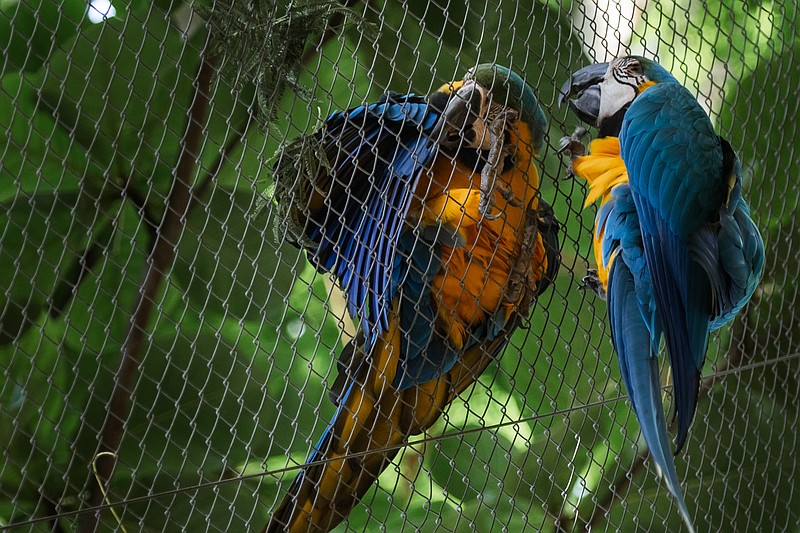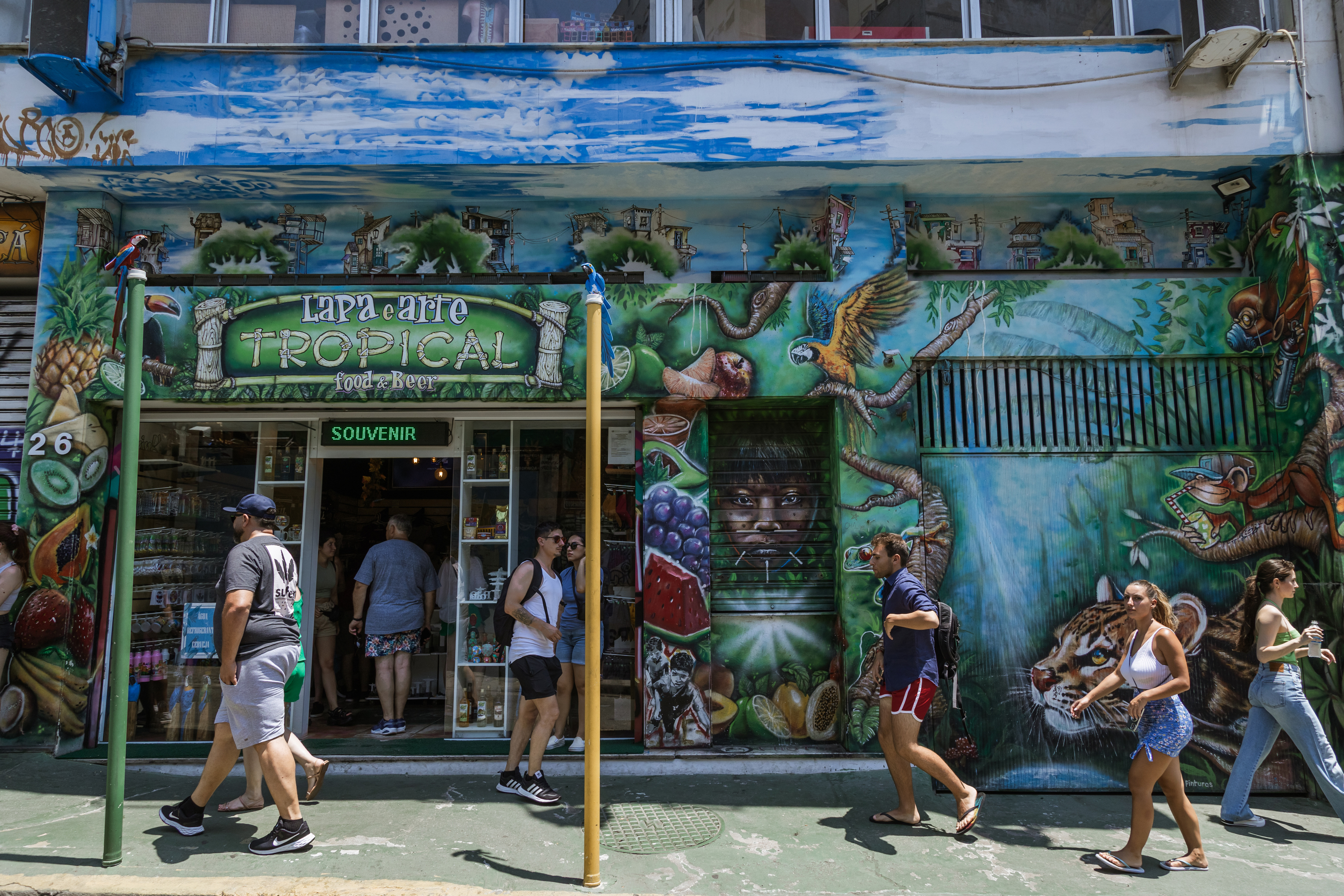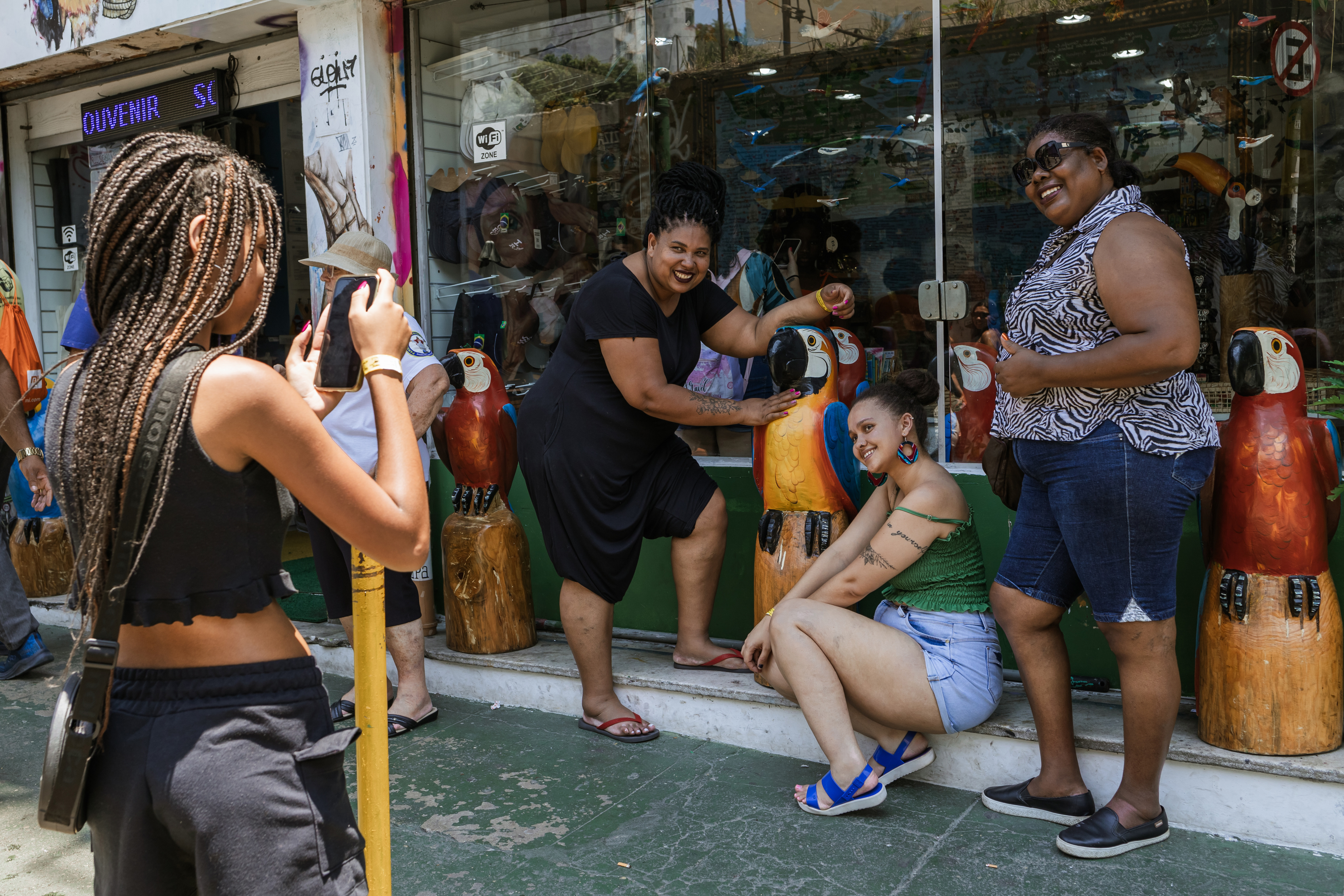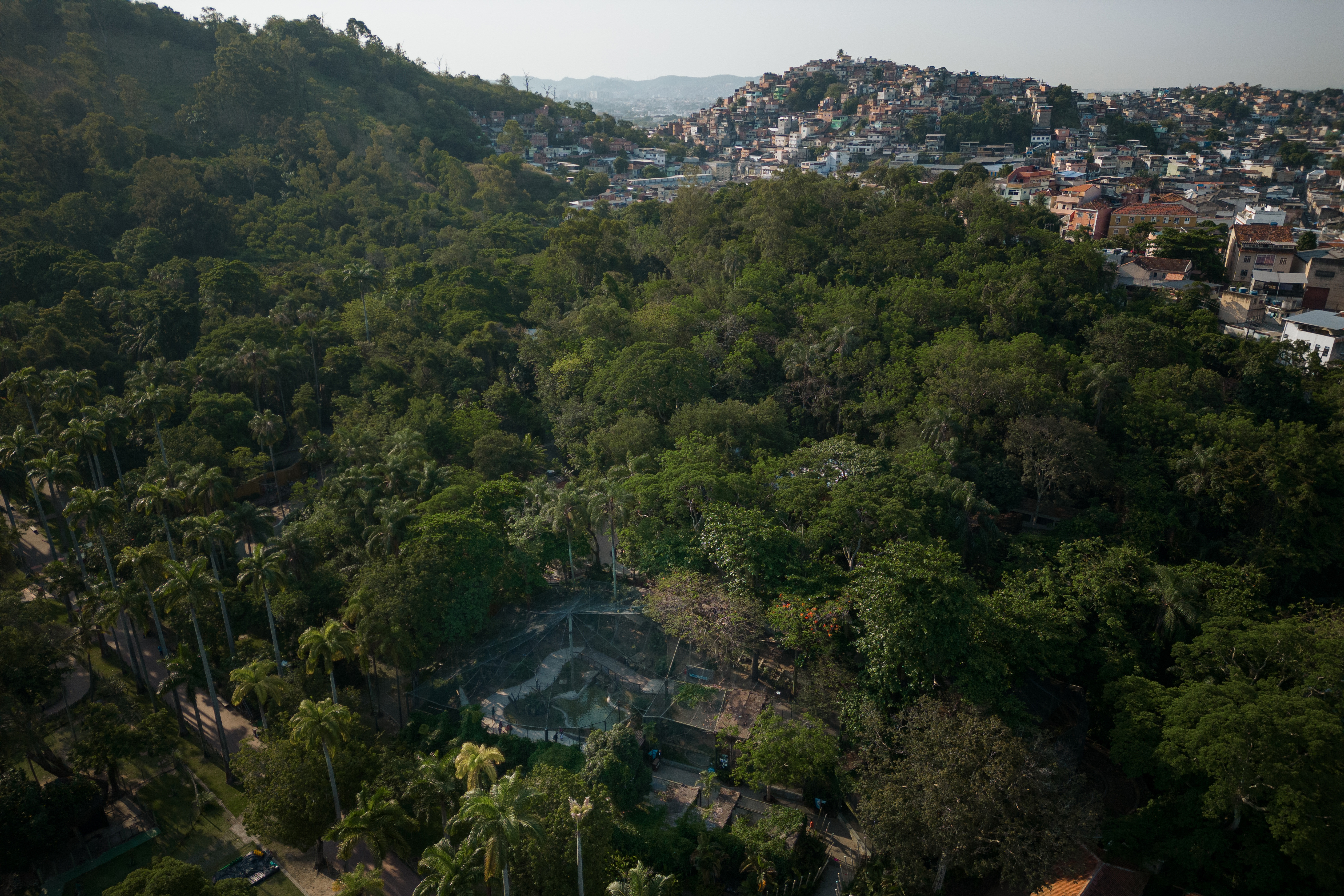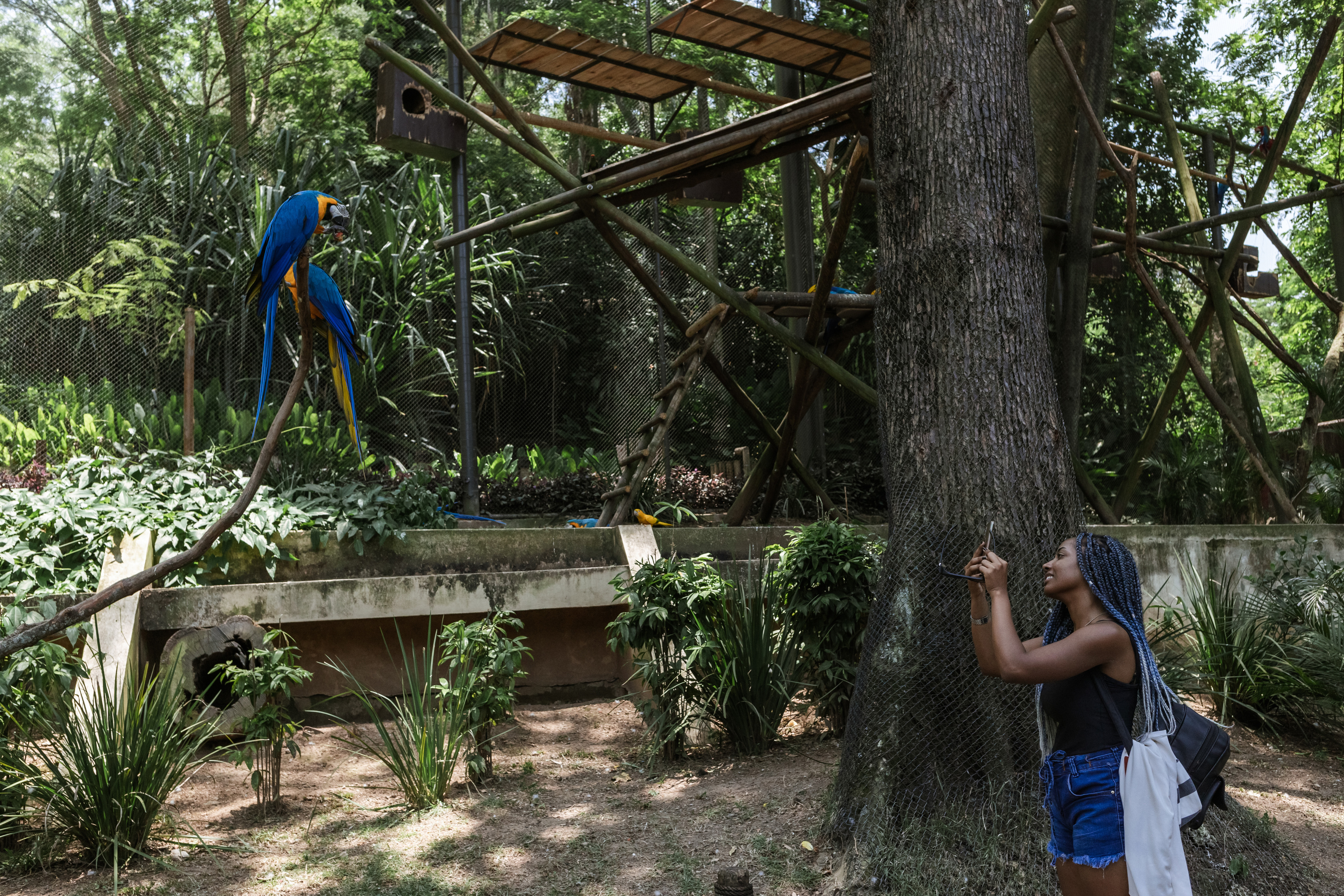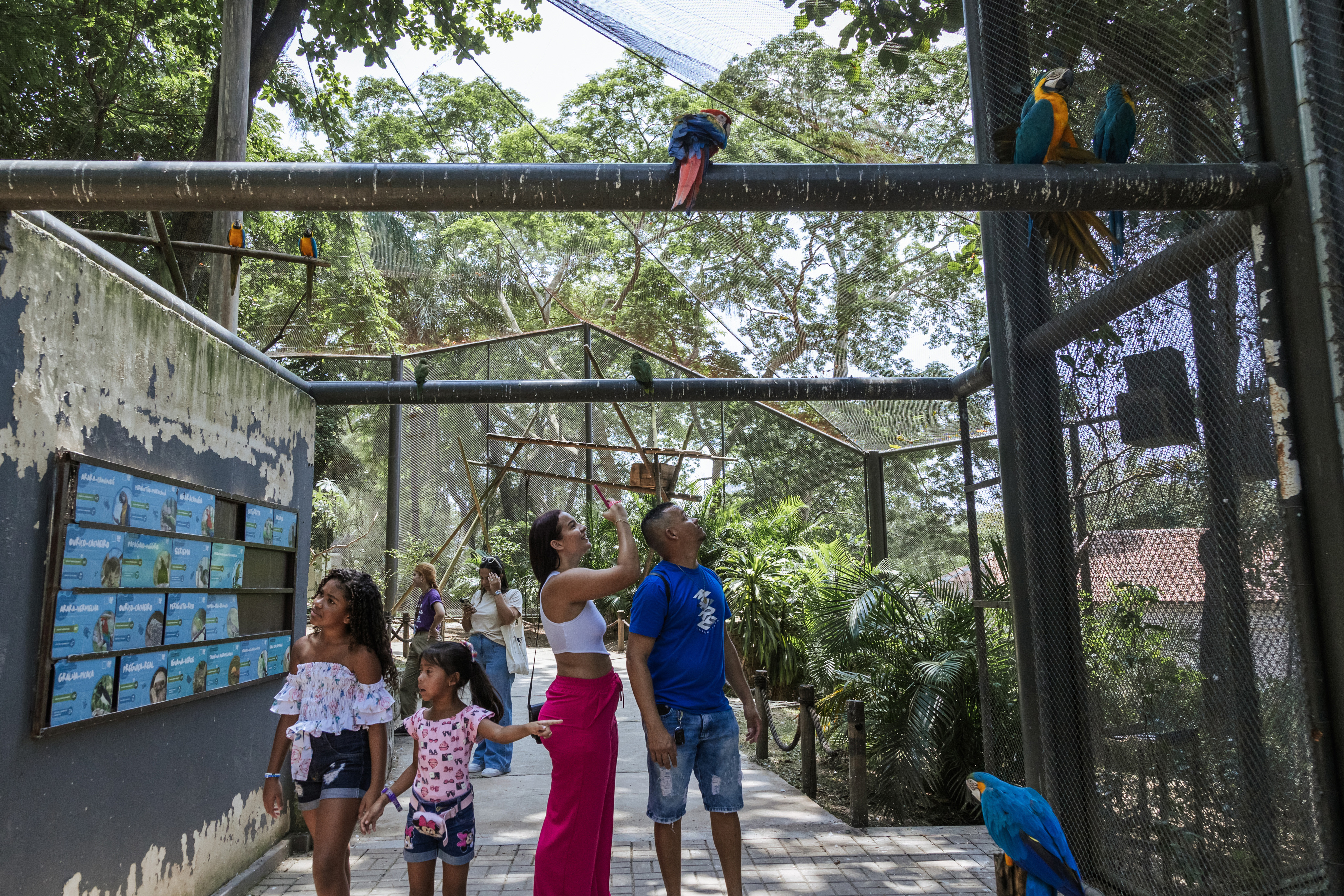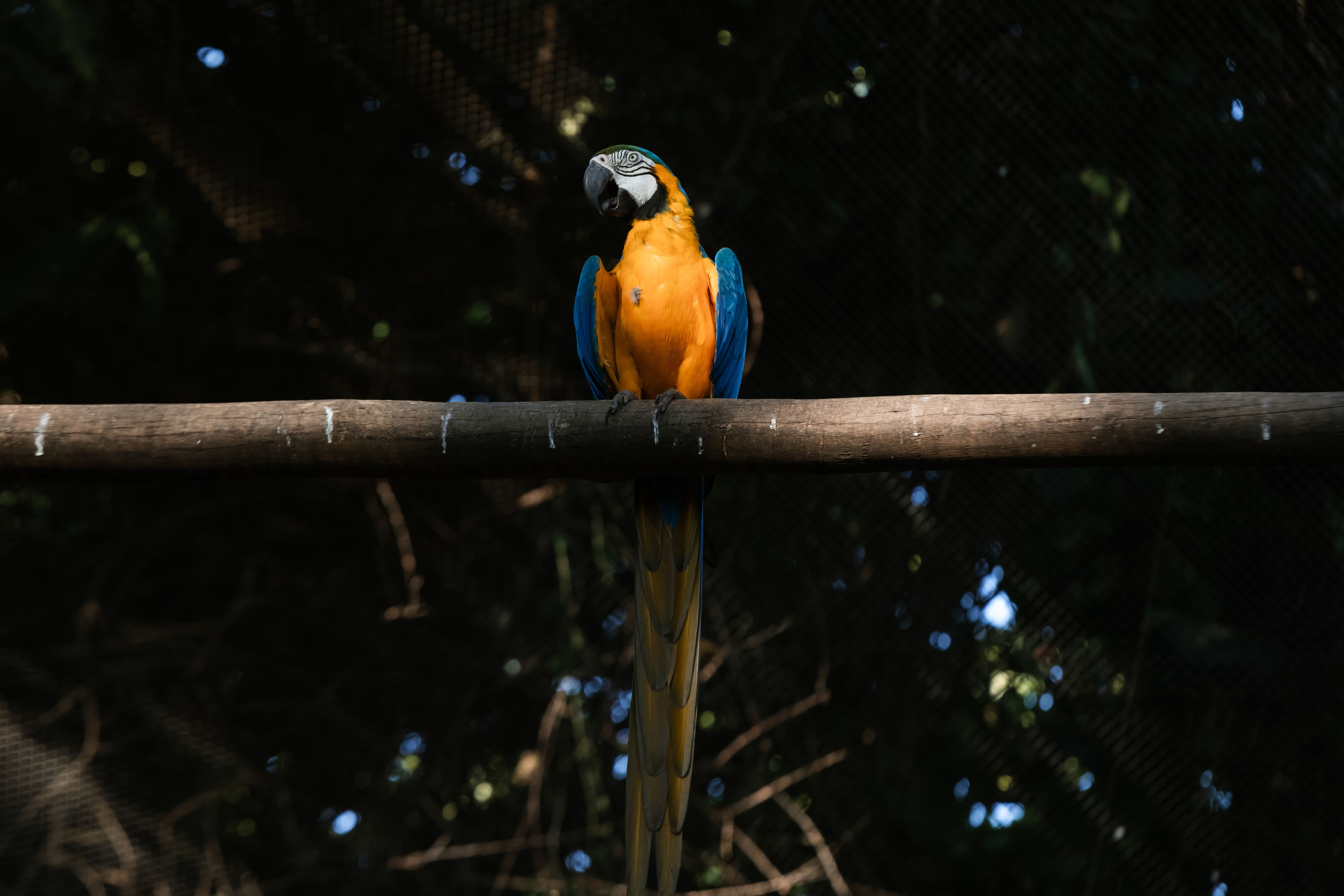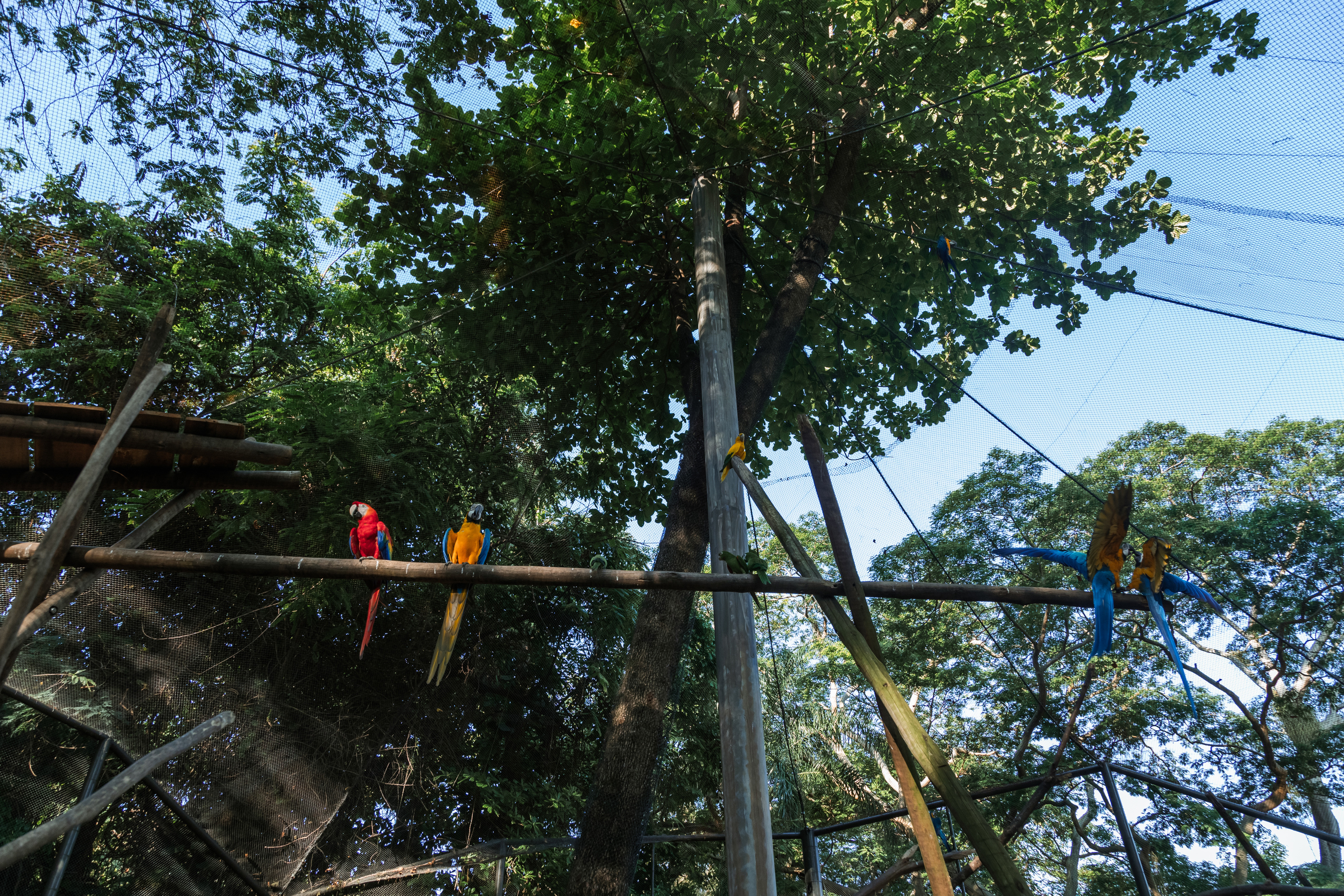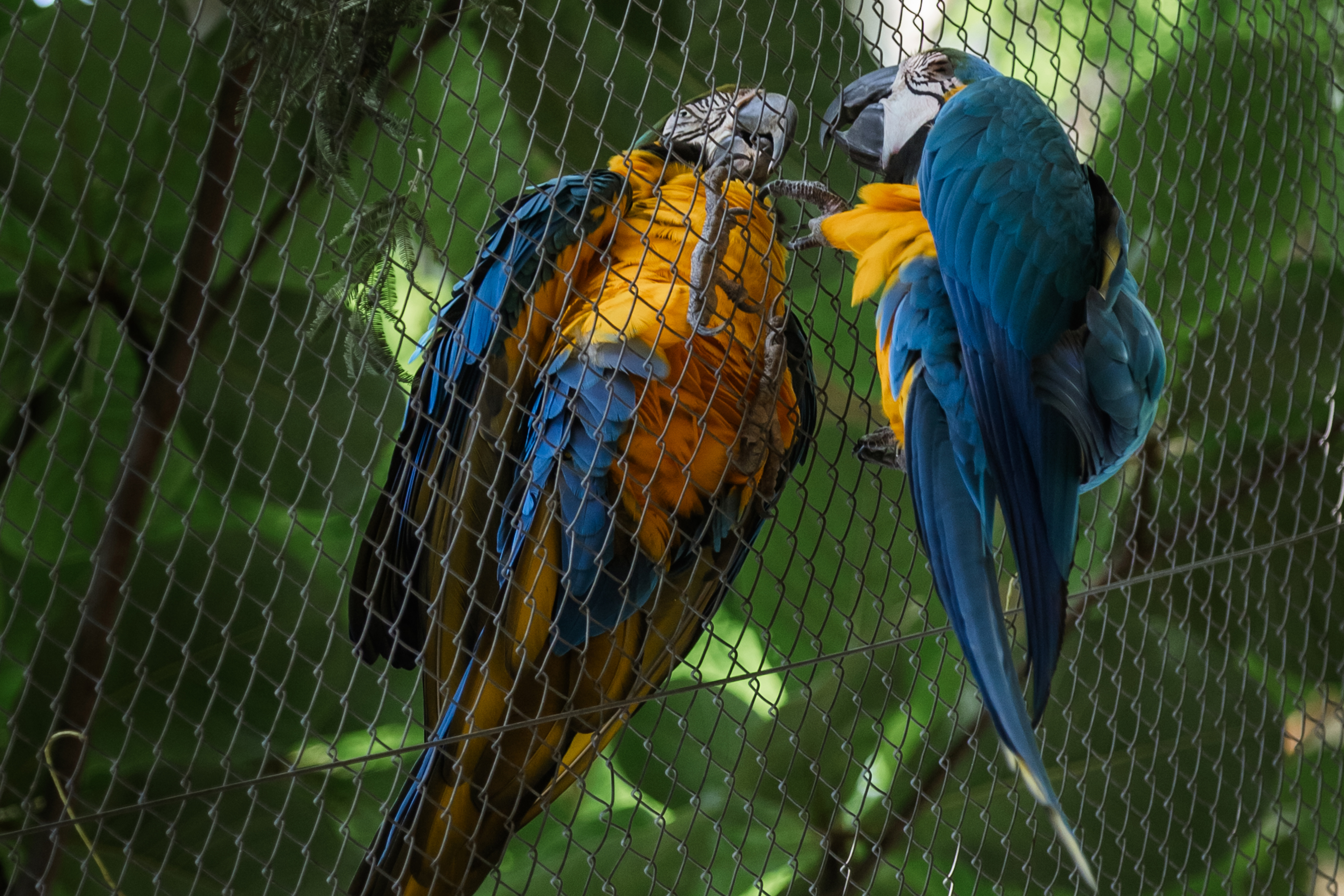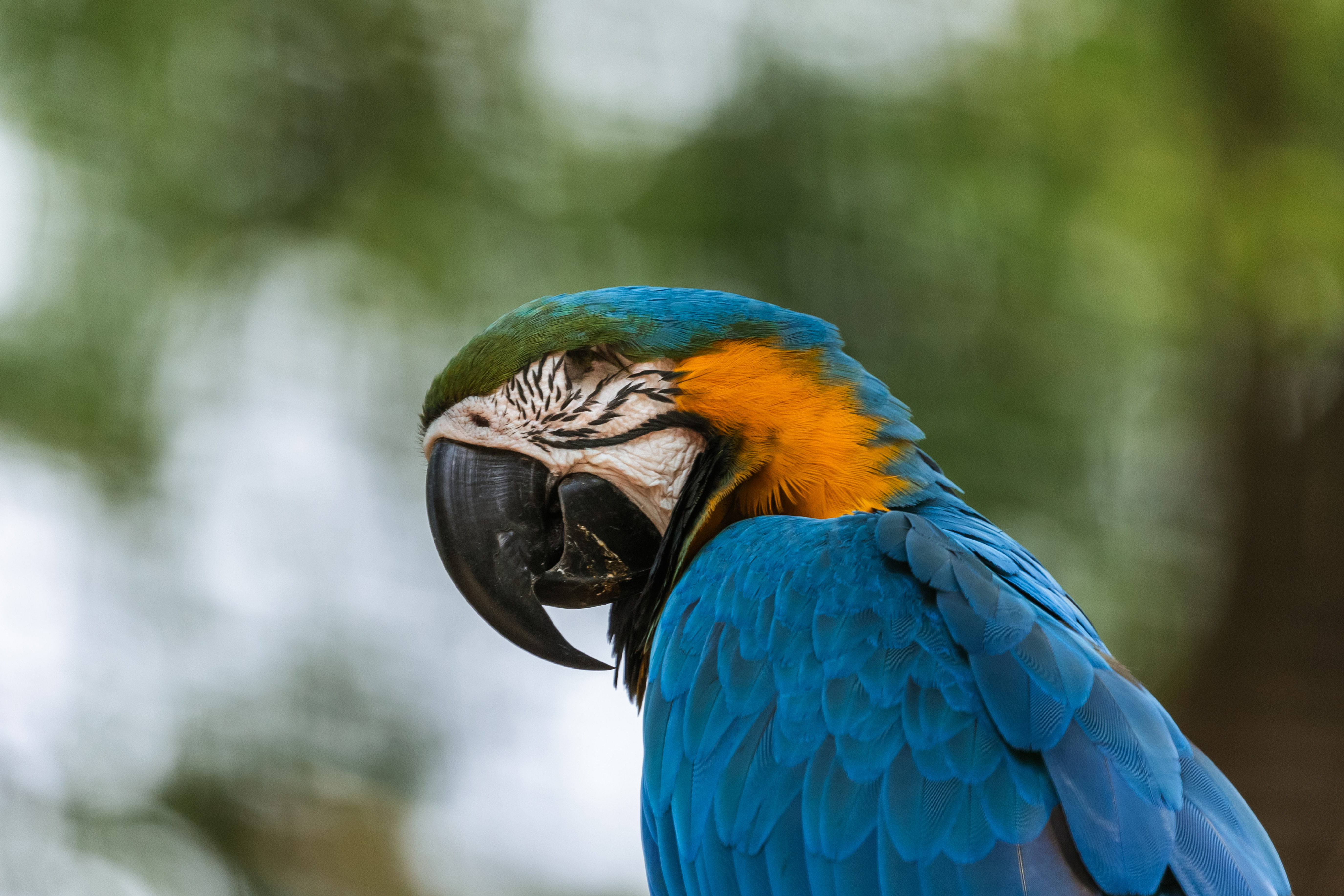RIO DE JANEIRO -- One recent afternoon, a smitten blue-and-yellow macaw grabbed a clawful of carrots and banana and took flight. He flapped to the top of the aviary at the Rio de Janeiro zoo and latched onto the netting. Just beyond, on the other side of the enclosure, was his love -- the only wild macaw in a city that hasn't seen a free one of their kind in two centuries.
She beckoned to him. He went to her. On opposite sides of the netting, they rubbed beaks. He passed her his food. They clung together, grasping claws, and wouldn't let go.
Every day for more than two decades, zookeepers attest, the wild macaw has flown to the Rio de Janeiro zoo where dozens of her species are kept captive -- including her partner.
In the animal kingdom, blue-and-yellow macaws are among the most faithful. They can live into their 50s, but when one finds a partner, it's for life. The pair typically spend their days and nights together. They nibble, cuddle and even kiss. Whatever food they have, they share. If one dies, the surviving partner's anguish is profound. Few ever couple again.
But even for such an animal, zookeepers and biologists say this Rio de Janeiro romance is nothing short of extraordinary.
Because it would violate Brazilian legislation to cage her, and because it would breach zoo policy and ethical standards to free him, the couple have only ever lived and loved on separate sides of the netting, unable to consummate their relationship.
Romeo and Julieta, zookeepers call them. An impossible love.
"I worked at the zoo for 28 years, and I never saw anything like this," Anderson Mendes Augusto said. "There's no explanation."
The tale has long enchanted the city, dazzling visitors, prompting a poem by one of Brazil's most celebrated poets -- and giving rise to a series of interpretations. Some have seen a commentary on fidelity and companionship. Others have discerned the contemporary themes of conservation and environmentalism. And still more have gleaned an allegory for Rio de Janeiro itself, a city carved from a lush forest now grappling with its own loss of wildness.
But at the aviary, the relationship appeared simpler: just two birds in love.
As the zoo closed, they were still up there, holding onto each other. The only person left inside was zookeeper Daniel Miranda. Soon it was time for him to go home, too. So he finished his last duties, walked through the gate and left the aviary empty of all visitors -- save one.
A SPECIES VANISHES
No one can say where Julieta came from. It's unknown where she goes at night. Even the most basic of biographical information -- age, birthplace -- remains elusive to zookeepers. Not one study has ever been done.
The historical record of the iconic blue-and-yellow macaw -- arara-canindé in Portuguese -- in Rio de Janeiro is likewise virtually nonexistent. Still, their image is ubiquitous here. Vendors sell macaw knickknacks to tourists. Painters draw them against tropical, palmy backgrounds. Blue macaws were the central figures in the 2011 animated film "Rio."
But there hadn't been a single record of a wild blue-and-yellow macaw in the city for more than 200 years.
Ornithologists have little doubt they once roamed the region. The city's rise, however, destroyed their habitat and created demand for their capture and sale. Coveted for its beauty and charisma, the macaw was sold as a pet to the colonial elite or defeathered for clothing.
The last known record of a macaw told of its killing. According to later academic research, Austrian naturalist Johann Natterer, who had been sent by the Austrian emperor to document Brazil's wildlife as his daughter prepared to marry the future Brazilian emperor, reported: "Killed [this macaw], which should interest us greatly, in March of 1818 in the concave of Rio de Janeiro."
From there, said Marcos Raposo, an ornithologist at the Federal University of Rio de Janeiro, "they completely disappeared."
That is, until two decades ago, when a blue-and-yellow macaw appeared at the Rio zoo one day. Then came back the next. And the one after that.
Julieta.
'LOVE AT FIRST SIGHT'
All anyone could do was speculate. Perhaps she'd escaped captivity and then, flying over the city, was attracted to the zoo's park, which is lined with the sort of palms macaws prefer for nesting. From there, she possibly heard her kind and went further to investigate.
"And that was it," said Augusto, then an assistant biologist at the zoo.
"Love at first sight," added zookeeper Ricardo Cerqueira.
But so much time has passed and so many zookeepers have come and gone that today it's difficult to divine what's real and what's legend. One story holds that Julieta once laid a batch of eggs near the enclosure, all unfertilized. Another tells of a time Julieta was apparently inspected by zookeepers, but they found no markings or rings to indicate her provenance.
Many people maintain that Julieta flies every night to the vast Tijuca urban forest, crossing nearly 2½ miles of dense city. Considered the world's largest urban forest, Tijuca National Park unfurls like a green blanket across nearly 15½ square miles, more than enough space to accommodate Julieta. But it's largely barren of wildlife. Julieta, if she ever chose to reside in the forest, would live there alone. Tijuca officials doubt that she does.
"Nothing is confirmed," said Leonardo Pinto, a caretaker who has worked at the zoo for 15 years. "Every generation has their own Julieta stories."
The one matter beyond doubt is her fidelity. Once, during a renovation, zookeepers had to move the macaws into a different aviary. They fretted over what would happen to Julieta. Would she be able to find her way back to Romeo? But within hours of the captive macaws' transfer, Julieta was there.
Only in March 2012, more than a decade after her first appearance, did her story attract wider notice. Television journalist Mônica Puga was working on a zoo segment about animals enduring a heat wave, when she heard something far more interesting.
"I got goose bumps," she said.
The day after her piece about Julieta aired on Band TV, people crowded into the zoo, not to see the animals inside the cages but to see the bird just outside one. Then came other Julieta news reports, and "the legend grew," Puga said.
Brazilian poet Affonso Romano de Sant'Anna was moved by the tale. He wept after seeing photos of macaws and wrote:
Free me
of my freedom
says the arara Canindé
to its lover
imprisoned
in the zoo's birdcage
Imprison me with you
So that caged
By your side
At last
I'll be free
A CHOICE BETWEEN SAFETY AND LOVE
The zoo is in one of the city's most urban areas, a green island in a gray sea teeming with potential threats to coveted wildlife. Macaws remain a lucrative species. Traffickers hawk exotic species at clandestine markets throughout the city. Capture is a risk Julieta runs daily.
But she still returns every day, including this one. She landed on top of the aviary. Romeo looked above. He leaped off his perch atop a wooden branch below.
"There he goes," Miranda the zookeeper said, watching him soar.
Twenty years together. Twenty years apart. Is their story a romance? Or a tragedy?
People visiting the aviary thought they knew the answer.
"It's beautiful," said Ivo Martins, 36. "She has all that space to be free, but she comes back here, to her community, despite the barriers."
Couple Douglas Pereira, 42, and Jaovana Santos, 48, later walked into the enclosure. They'd been together for 23 years -- as long as Julieta's partnership with Romeo. "This is a victory," Pereira said. "She shows us how to love, to be monogamous, to be closer to your family."
For zookeeper Leonardo Pinto, her visits evoked another emotion: constancy. There is so much uncertainty in life. Jobs come and go. Kids grow up. Friendships fade. But not Julieta. She keeps coming back.
"I can count on her presence tomorrow," he said. "Not always do we have that in life. When she's here, I know everything is in its right place."
Up above, Romeo latched onto the top of the aviary. He let out a squawk. He looked to Julieta. He went to her. Closer and closer, barely in reach.
